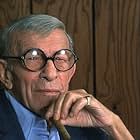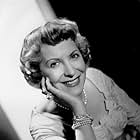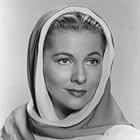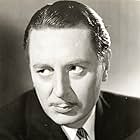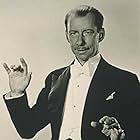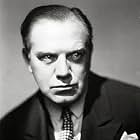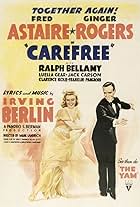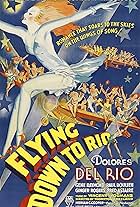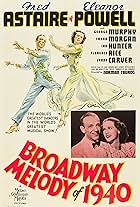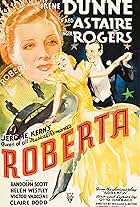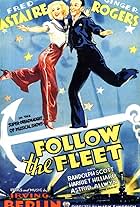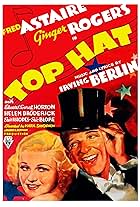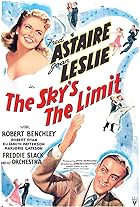IMDb RATING
6.8/10
2.4K
YOUR RATING
A betting castle staff, and a series of misunderstandings and set-ups, leads to an American entertainer and an English damsel falling in love.A betting castle staff, and a series of misunderstandings and set-ups, leads to an American entertainer and an English damsel falling in love.A betting castle staff, and a series of misunderstandings and set-ups, leads to an American entertainer and an English damsel falling in love.
- Won 1 Oscar
- 1 win & 1 nomination total
Pearl Amatore
- Madrigal Singer
- (uncredited)
Dorothy Barrett
- Dancer in Funhouse Number
- (uncredited)
May Beatty
- Landlady
- (uncredited)
Eugene Beday
- Bit Role
- (uncredited)
Charles Bennett
- Carnival Barker
- (uncredited)
Frank Benson
- Attendant
- (uncredited)
John Blood
- Bit Role
- (uncredited)
Angela Blue
- Dancer
- (uncredited)
Storyline
Did you know
- TriviaWhen Fred Astaire learned that Gracie Allen was nervous about dancing with him on-stage, he reportedly made a point of tripping and falling in front of her the first day on the set to put her at her ease.
- GoofsThis movie is based in England where vehicles drive on the left, but all the vehicles are left-hand drive, which obviously is what side they drive on in the US.
- ConnectionsFeatured in Hollywood and the Stars: The Fabulous Musicals (1963)
- SoundtracksI Can't Be Bothered Now
(1937) (uncredited)
Words by Ira Gershwin
Music by George Gershwin
Song and dance performed by Fred Astaire
Featured review
A DAMSEL IN DISTRESS (RKO Radio, 1937), directed by George Stevens, stars Fred Astaire in his first starring musical without his famous and most frequent co-star, Ginger Rogers. From a story by P.G. Wodehouse, which was originally filmed in the silent era of 1919, this update, with song and dance in the Astaire tradition, reportedly failed at the box office. Even for a flop, the film benefits highly for its grand tunes by George and Ira Gershwin; Hermes Pan's well deserved Academy Award winning dance direction for "The Fun House Number," and fine comedy support by George Burns and Gracie Allen, then on loan-out assignment from Paramount. Who's got the last laugh now?
The plot revolves around Jerry Halliday (Fred Astaire), an American entertainer vacationing in England accompanied by his publicity agent, George Burns (George Burns) and stenographer, Gracie Allen (Gracie Allen). Then there's Lady Alyce Marshmorton (Joan Fontaine) of Totley Castle, on her way to London for a secret rendezvous with Geoffrey, a young American she met in Switzerland a year ago. To lose the following Kegs (Reginald Gardiner), her family butler, and Albert (Harry Watson), the page boy, Alyce hides inside the backseat a cab where she encounters its passenger, Jerry. Misunderstanding occur when both Kegs and Albert mistake Jerry for Alyce's Mr. X. As for Jerry, he comes to the conclusion the young lady's in distress. Upon Alyce's return home, her Aunt Caroline (Constance Collier) confines her to the suburban estate, while her easy-going father, Sir John (Montagu Love), who's habit is gardening, feels his daughter should follow her own impulse. As Jerry cancels his upcoming trip to Paris, he, along with George and Gracie, rent out a nearby cottage by the castle to see what he can do to help this damsel in distress. Other members in the castle are Ray Noble as Reggie, Aunt Caroline's stepson, trumpet player and orchestra leader, gets his share of Gracie antics, ("Right-o"), and Jan Duggan billed as Miss Ruggles, one of the Madrigalist singers of "The Jolly Tar and the Milkmaid."
Song interludes include: "I Can't Be Bothered Now" (sung by Fred Astaire); "The Jolly Tar and the Milkmaid," "Put Me to the Test" (instrumental dance with Astaire, Burns and Allen); "Stiff Upper Lip" (sung by Gracie Allen/danced by Astaire, Burns and Allen); "Things Are Looking Up" (sung by Astaire/danced by Astaire and Fontaine); "Nice Work If You Can Get It," "Ah Chi A Uoi Perdini Iddio" from the opera MARTA (performed/voice dubbed by Reginald Gardiner), and "Nice Work If You Can Get It" (reprise, drum solo/ dance by Astaire). Fascinating Rhythm.
For an Astaire musical, there isn't much dancing, but when there is, it makes up for some dull spots. Aside from brief dance solo by Astaire on the foggy London streets, and another with drums, his two with George and Gracie comes as a surprise for anyone familiar with Burns and Allen as a comedy team - for that they can dance, too. Their first is a comedy dance segment involving a suit of armor. The next comes shortly after-wards at an amusement park that leads into the now classic ten minute "Fun House" number with Gracie singing pleasingly without stepping out of character. This segment alone is worth the price of admission which indicates Gracie more than just the scatterbrained partner to straight man George Burns. In every Astaire musical, his female co-star gets to have at least one dance with him. Joan Fontaine does just that, only slightly for the film's best song, "Things Are Looking Up." It's no threat to the classic dance numbers Astaire did with Rogers, but this one with Fontaine waltzing through the estate to soothing score is quite satisfactory. Shall we dance?
As with 1937 theater goers, I didn't particularly care for A DAMSEL IN DISTRESS when I first watched this on commercial television (New York City's WOR-TV, Channel 9, during its weekly Sunday night showcase, "When Movies Were Movies" hosted by Joe Franklin) in November 1970. After watching Astaire and Rogers in THE GAY Divorcée (1934) and TOP HAT (1935) earlier that year, I was expecting more of the same with climatic song and dance finish. Though the mistaken identity plot gets some replay, I couldn't help but feel strange it was watching Astaire with a different leading lady, how annoying little Albert can be at times, especially with his phony crying outbursts for one scene. After repeated viewing, however, I have grown to enjoy this one. Looking more like a throwback to those reproduced filmed Broadway musicals of the early talkie era, with leading man and pretty co-star, accompanied by secondary couple for comedy relief purposes, the scoring at times has that 1940s feel to it of swing, and slow tempo scoring of the big band era. Though Astaire reunited himself with Rogers in two additional musicals for RKO, he proved himself acceptable opposite different leading ladies for years to come, while both Rogers and Fontaine would win Academy Awards in 1940 and 41 respectively for their dramatic performances. Things are looking up.
When presented on American Movie Classics prior to 2001, audio for A DAMSEL IN DISTRESS was in desperate need of restoration. However, current prints shown on Turner Classic Movies is much better in both visuals and audio. Distributed to home video in the 1980s from Nostalgia Merchant, A DAMSEL IN DISTRESS is also available on DVD. And be sure not to miss Astaire's attempt in duplicating Leonard's Leap. Nice work if you can get it. (***1/2)
The plot revolves around Jerry Halliday (Fred Astaire), an American entertainer vacationing in England accompanied by his publicity agent, George Burns (George Burns) and stenographer, Gracie Allen (Gracie Allen). Then there's Lady Alyce Marshmorton (Joan Fontaine) of Totley Castle, on her way to London for a secret rendezvous with Geoffrey, a young American she met in Switzerland a year ago. To lose the following Kegs (Reginald Gardiner), her family butler, and Albert (Harry Watson), the page boy, Alyce hides inside the backseat a cab where she encounters its passenger, Jerry. Misunderstanding occur when both Kegs and Albert mistake Jerry for Alyce's Mr. X. As for Jerry, he comes to the conclusion the young lady's in distress. Upon Alyce's return home, her Aunt Caroline (Constance Collier) confines her to the suburban estate, while her easy-going father, Sir John (Montagu Love), who's habit is gardening, feels his daughter should follow her own impulse. As Jerry cancels his upcoming trip to Paris, he, along with George and Gracie, rent out a nearby cottage by the castle to see what he can do to help this damsel in distress. Other members in the castle are Ray Noble as Reggie, Aunt Caroline's stepson, trumpet player and orchestra leader, gets his share of Gracie antics, ("Right-o"), and Jan Duggan billed as Miss Ruggles, one of the Madrigalist singers of "The Jolly Tar and the Milkmaid."
Song interludes include: "I Can't Be Bothered Now" (sung by Fred Astaire); "The Jolly Tar and the Milkmaid," "Put Me to the Test" (instrumental dance with Astaire, Burns and Allen); "Stiff Upper Lip" (sung by Gracie Allen/danced by Astaire, Burns and Allen); "Things Are Looking Up" (sung by Astaire/danced by Astaire and Fontaine); "Nice Work If You Can Get It," "Ah Chi A Uoi Perdini Iddio" from the opera MARTA (performed/voice dubbed by Reginald Gardiner), and "Nice Work If You Can Get It" (reprise, drum solo/ dance by Astaire). Fascinating Rhythm.
For an Astaire musical, there isn't much dancing, but when there is, it makes up for some dull spots. Aside from brief dance solo by Astaire on the foggy London streets, and another with drums, his two with George and Gracie comes as a surprise for anyone familiar with Burns and Allen as a comedy team - for that they can dance, too. Their first is a comedy dance segment involving a suit of armor. The next comes shortly after-wards at an amusement park that leads into the now classic ten minute "Fun House" number with Gracie singing pleasingly without stepping out of character. This segment alone is worth the price of admission which indicates Gracie more than just the scatterbrained partner to straight man George Burns. In every Astaire musical, his female co-star gets to have at least one dance with him. Joan Fontaine does just that, only slightly for the film's best song, "Things Are Looking Up." It's no threat to the classic dance numbers Astaire did with Rogers, but this one with Fontaine waltzing through the estate to soothing score is quite satisfactory. Shall we dance?
As with 1937 theater goers, I didn't particularly care for A DAMSEL IN DISTRESS when I first watched this on commercial television (New York City's WOR-TV, Channel 9, during its weekly Sunday night showcase, "When Movies Were Movies" hosted by Joe Franklin) in November 1970. After watching Astaire and Rogers in THE GAY Divorcée (1934) and TOP HAT (1935) earlier that year, I was expecting more of the same with climatic song and dance finish. Though the mistaken identity plot gets some replay, I couldn't help but feel strange it was watching Astaire with a different leading lady, how annoying little Albert can be at times, especially with his phony crying outbursts for one scene. After repeated viewing, however, I have grown to enjoy this one. Looking more like a throwback to those reproduced filmed Broadway musicals of the early talkie era, with leading man and pretty co-star, accompanied by secondary couple for comedy relief purposes, the scoring at times has that 1940s feel to it of swing, and slow tempo scoring of the big band era. Though Astaire reunited himself with Rogers in two additional musicals for RKO, he proved himself acceptable opposite different leading ladies for years to come, while both Rogers and Fontaine would win Academy Awards in 1940 and 41 respectively for their dramatic performances. Things are looking up.
When presented on American Movie Classics prior to 2001, audio for A DAMSEL IN DISTRESS was in desperate need of restoration. However, current prints shown on Turner Classic Movies is much better in both visuals and audio. Distributed to home video in the 1980s from Nostalgia Merchant, A DAMSEL IN DISTRESS is also available on DVD. And be sure not to miss Astaire's attempt in duplicating Leonard's Leap. Nice work if you can get it. (***1/2)
- How long is A Damsel in Distress?Powered by Alexa
Details
Box office
- Budget
- $1,035,000 (estimated)
- Runtime1 hour 41 minutes
- Color
- Aspect ratio
- 1.37 : 1
Contribute to this page
Suggest an edit or add missing content










